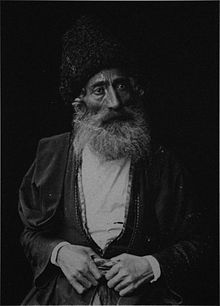
Back يهود جورجيا Arabic يهود جورجيا ARZ Gürcüstan yəhudiləri Azerbaijani Georgiske jøder Danish Georgische Juden German تاریخ یهودیان در گرجستان Persian Georgianjuutalaiset Finnish Histoire des Juifs en Géorgie French יהדות גאורגיה HE Վրացական հրեաներ Armenian
This article needs additional citations for verification. (August 2023) |
 | |
| Total population | |
|---|---|
| 65,000-80,000 | |
| Regions with significant populations | |
| 65,000[1] | |
| 10,000 | |
| 1,405 (not including Abkhazia or South Ossetia) | |
| 1,200 | |
| 800 | |
| 500 | |
| 14[2] | |
| Languages | |
| Hebrew, Georgian (Judaeo-Georgian), English, Russian | |
| Religion | |
| Judaism | |
| Related ethnic groups | |
| Georgians, Iraqi Jews, Iranian Jews, Bukharian Jews, Kurdish Jews, Mountain Jews, Soviet Jews | |
| Part of a series on |
| Jews and Judaism |
|---|
The Georgian Jews (Georgian: ქართველი ებრაელები, romanized: kartveli ebraelebi, Hebrew: יהדות גאורגיה, romanized: Yahadut Georgia) are a community of Jews who migrated to Georgia during the Babylonian captivity in the 6th century BCE.[3] It is one of the oldest communities in the region. They are also widely distinguished from the Ashkenazi Jews in Georgia, who arrived following the Russian annexation of Georgia.[4]
Prior to Georgia's annexation by the Russian Empire in 1801, the 2300-year history of the Georgian Jews was marked by an almost total absence of antisemitism and a visible assimilation in the Georgian language and culture.[5] The Georgian Jews were considered ethnically and culturally distinct from neighboring Mountain Jews.[6]
As a result of a major emigration wave in the 1990s, the vast majority of Georgian Jews now live in Israel, with the world's largest community living in the city of Ashdod.
- ^ "peoplegroups.org". peoplegroups.org. Archived from the original on 2 July 2024. Retrieved 2 July 2024.
- ^ "Russian census 2020". rosstat.gov.ru. Archived from the original on 24 January 2020. Retrieved 16 January 2023.
- ^ The Wellspring of Georgian Historiography: The Early Medieval Historical Chronicle The Conversion of Katli and The Life of St. Nino, Constantine B. Lerner, England: Bennett and Bloom, London, 2004, p. 60
- ^ Israeli, Lia. "JewishGen". Kehilalinks.
- ^ Forget Atlanta - this is the Georgia on my mind By Jewish Discoveries and Harry D. Wall Feb. 7, 2015, Haaretz
- ^ Mountain Jews: customs and daily life in the Caucasus, Leʼah Miḳdash-Shemaʻʼilov, Liya Mikdash-Shamailov, Muzeʼon Yiśraʼel (Jerusalem), UPNE, 2002, page 9